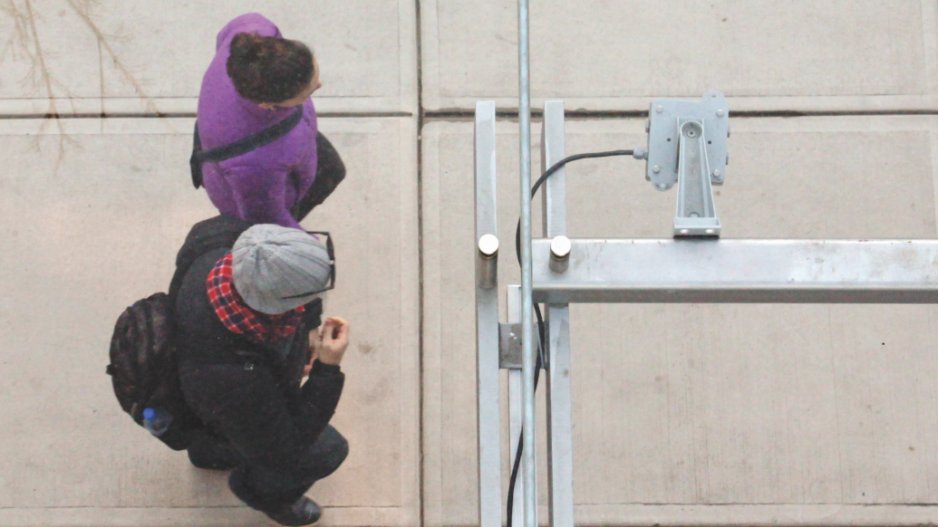You are one of the 17,000 people walking along the north side of Robson Street on an average day. You pause to check out a window display at Sephora before moving on. Unbeknownst to you, you’re being watched and analyzed to inform business decisions.
The Robson Street Business Association (RSBA) installed a sophisticated thermal pedestrian counter on the awning of the Sephora store in the 1000 block of Robson Street about nine months ago and added a second device near the corner of Bute and Robson streets in October.
The City of Vancouver earlier this year then gave the Downtown Vancouver Business Improvement Association (DVBIA) approval to put six lower-technology pedestrian counters on city poles on Granville, West Hastings and Alberni streets.
“These counters have been around for a while, but they haven’t hit mainstream in retail until recently,” said DIG360 Consulting Ltd. principal David Gray. “They’re getting ubiquitous.”
What once was the purview solely of deep-pocketed or large-chain retailers has become the norm for malls and shopping districts.
“The sensors track body heat and show how many people go in each direction, and we can break the info down into hourly or every 15 minutes,” said RSBA executive director Teri Smith.
Her intent is to provide the data to Robson Street merchants who can compare it to internal data to determine how successful they are at converting passersby into store visitors.
They then crunch transaction data to figure out what percentage of store visitors made purchases.
Knowing as much information as possible about how many people walk on city streets enables business associations to go to retailers who are closed on Sundays, or other times, and tell them how many potential customers passed their doors and were unable to shop, DVBIA CEO Charles Gauthier added.
The thermal sensors on Robson Street cost $5,000 a pop whereas the DVBIA’s ones cost $3,500. The Robson Street ones cost more because they are more accurate when tracking heavy pedestrian traffic.
“Retailers didn’t always know the depth of in-store analytics that was possible, but the rise of website analytics has taught them,” Gray said. “There are all these ways to navigate and track a website, so retailers started asking, ‘Why can’t we do this in-store?’”
HeadCount, Axper, ShopperTrak, Eco-Counter and Springboard are some of the companies competing for business in the ballooning niche of shopper-tracking technology.
Gray explained that recent technological innovations include the ability for retailers to track how long store visitors stand in the same spot – information that could identify bottlenecks at a checkout or change room.
“There’s so much competition that every retailer is looking for that microscopic edge to do better for the customer,” Gray said. “That’s why there’s this surge of investment in this area.”
Linda Letts, who is CEO of the 48-location Urban Barn and has been a pioneer in using technology to track shoppers, agreed with Gray. Letts uses in-store analytics to determine when to invest in more point-of-sale machines, increase staff resources or alter store layouts.
Cadillac Fairview senior vice-president and portfolio manager Tom Knoepfel told Business in Vancouver that his malls, such as Pacific Centre, use technology to understand shoppers’ movement patterns and determine which entrances are the most popular.
“We are testing some new technology that gives deeper information,” he said. “If we know we have a weaker area, we’ll try to move a group of retailers into that area who are successful and have higher sales.”
Not all retailers want to be in high-traffic areas, however.
Retail Insider Media Ltd. owner Craig Patterson told BIV that, although clothing chains such as Aritzia and Lululemon usually want to be in the busiest part of a mall, luxury retailers often want less hectic areas and to be near each other.
Retail broker and CBRE senior vice-president Mario Negris is intrigued by advances in new shopper-tracking technology but said that the only data that potential tenants ever ask him about is sales per square foot by nearby retailers – information that is difficult to acquire unless those retailers are paying rent based in part on a percentage of sales. •




